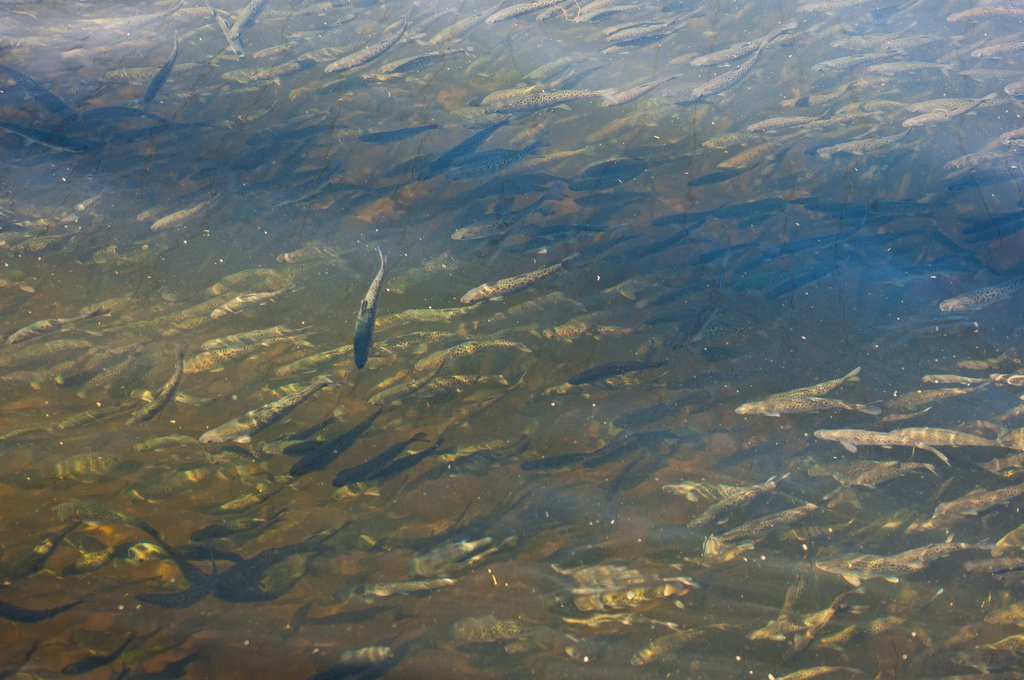Big Salmon Runs Today – What about the Future?
- March 13, 2015
- John Harrison

2014 was a record year for salmon in the Columbia River.
More salmon returned from the Pacific Ocean and were counted crossing Bonneville Dam, 146 miles inland, on their way to spawn—at hatcheries or in the wild—in 2014 than in any year since 1938, when fish counting began there. The 2014 run was about 2.5 million fish, continuing the trend of big returns in the 21st Century compared to the 1990s.
That’s good news for people who fish and for the ecosystem, which benefits from the nutrients added to rivers by salmon that die after spawning. The big numbers, however, may portend less benefit for future generations of fish. That is because the productivity of naturally spawning salmon is decreasing due to a mechanism called “density dependence” that regulates the growth of populations. The detailed scientific evidence is explained in a 2015 report by the Independent Scientific Advisory Board (ISAB), a panel of 11 experts that advises the Northwest Power and Conservation Council, the federal agency NOAA Fisheries, and Columbia River Basin Indian tribes.
The ISAB report cites strong evidence that robust runs—record-setting for the present day but still less than half their estimated historical abundance—are exceeding habitat limits in some areas. These include limits on the types and amounts of available food, shelter from predators and competitors, and the ability to move to other suitable habitats when needed. Collectively, these limits, and others, define the “carrying capacity” of habitat. When carrying capacity is exceeded, salmon runs can collapse quickly to levels the habitat will support.
What can be done? The ISAB has a number of recommendations for fish managers and planners, including:
- Understand why density dependence occurs in particular habitats and life stages of fish, such as limitations in spawning habitat, rearing habitat or food supply, or predator-prey interactions, and account for density-dependence when evaluating the responses of fish populations to restoration actions. This can help guide effective habitat restoration and population-recovery actions.
- Set biologically based spawning escapement goals that sustain fisheries and also a resilient ecosystem.
- Balance hatchery production and releases with the basin’s capacity to support existing natural populations.
- Improve stream habitat to help resident fish as well as those that go to the ocean.



